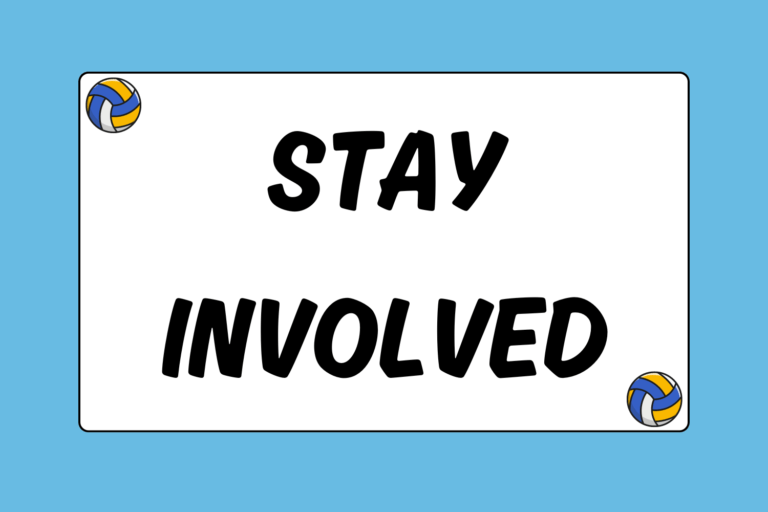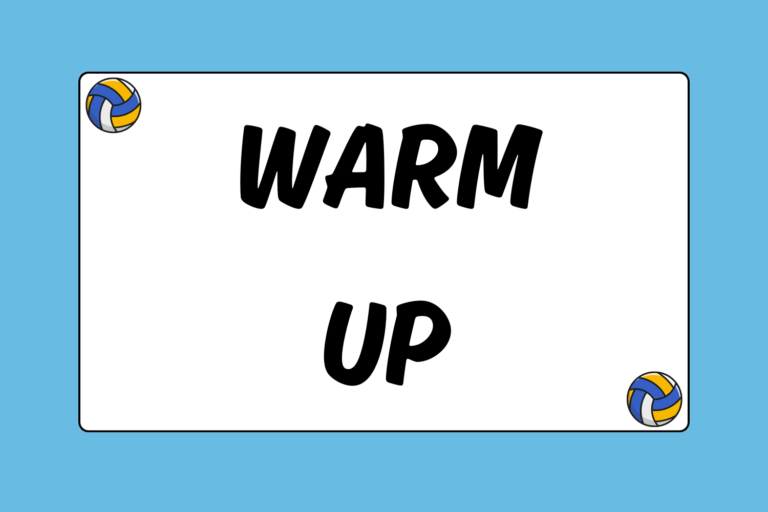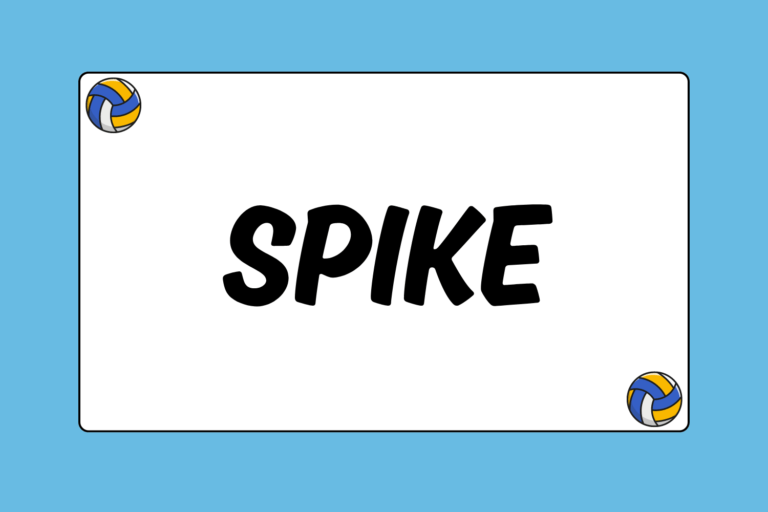The rotational defensive formation is probably the most commonly used defensive strategy among young and/or inexperienced volleyball teams. It allows the defense to better cover tips behind the block and dig deep line hits, as well as help the setter transition quickly from defense to offense. This guide will review the basics of the rotational defense.
Defensive Base
Before the opposition sends the ball back to your side of the court, your team should get into the default defensive position also known as “defensive base,” where each player switches from their original starting spot to the positions shown on the diagram below.
The defense has to continuously read the situation to anticipate the opponent’s next move. If a pass to the setter is successfully completed, she could then dump the ball or set it to any of the front row players for an attack—a move that should become clear once the setter plays the ball and should prompt an immediate release into your rotation defense.
Defenders should transition as quickly as possible from “base position” (shown in the figure above) to the appropriate defensive location, since your team’s chances of successfully digging the ball are exponentially increased by being in the correct defensive position before the opposing hitter makes contact.
The correct defensive positioning for each possible type of attack is discussed in depth below.
Defending Against the Outside Hitter
If the ball is set to an opponent’s outside hitter while your team is in a rotation defense, the wing defenders (right back and left back) are responsible for covering the tip and the deep angle ball, while the middle back rotates to the same sideline to which the ball is set.
The diagram below illustrates each defender’s position when the opponent sets the left front hitter:
- OH (outside hitter): The outside hitter is responsible for covering the court that is to the left of the middle hitters left shoulder and in front of the ten foot line. The OH’s area of responsibility overlaps with the RB’s area.
- LB ( left back defender): The left back defender is responsible for any balls hit deep into the angle of the court.
- RB (right back defender): The right back is responsible for picking up any balls that are tipped over the block and in front of the ten foot line.
- MB (middle back defender): The middle back is resposible for digging any ball that is hit deep down the sideline.
Defending Against the Opposite/Right Side Hitter
The defensive formation for defending against the opposite/right side hitter is basically a mirror version of the outside hitter defensive formation.
Below is a diagram for defensive positioning during an opposite/right side attack:
- RS (right side/opposite hitter): The opposite hitter is responsible for covering the court that is to the left of the middle hitters left shoulder and in front of the ten foot line. (The OH’s area of responsibility overlaps with the RB’s area.)
- LB (left back defender): The left back is responsible for picking up any balls that are tipped over the block and in front of the ten foot line.
- RB (right back defender): The right back defender is responsible for any balls that are hit deep into the angle of the court.
- MB (middle back defender): The middle back is resposible for digging any ball that is hit deep down the sideline.
Defending Against the Middle Hitter
The defensive formation for defending against a middle attack is similar to the base defense—the wing defenders take a diagonal step towards the net and towards the sideline, while the middle back defender step in towards the net.
Below is a diagram of the correct formation for defending against a middle attack:
- RS (right side/opposite hitter): The opposite hitter is responsible for digging short tips over the block and hard driven balls that are hit to the right of the middle blocker and in front of the ten foot line.
- OH (outside hitter): The outside hitter defends against tips in front of the ten foot line and balls that are hit to the left of the middle blocker and in front of the ten foot line.
- LB (left back defender): The left back is responsible for picking up any hard driven balls that are hit in their direction
- RB (right back defender): The right back defender is responsible for picking up any hard driven balls that are hit in their direction.
- MB (middle back defender): The middle back is resposible for digging any ball hit over the block or deep into the court.
Is the Rotation Defense For Me?
When deciding which type of defense your team should run, consider two factors above all else:
- The strengths and weaknesses of your players. If your setter is having trouble in the transition game then the rotation defense could be helpful because it puts the setter in optimal position to transition to the net.
- The strength and weaknesses of the opposing players—for example, the rotation defense is most effective if the opponent consistently tips or hits the ball line. If the opponent likes to hit the ball hard and deep into the court, this type of formation may leave too many holes for the opponent to exploit.
The ideal defensive system plays to your strengths, but at the same time counters the strengths of your opponent.





